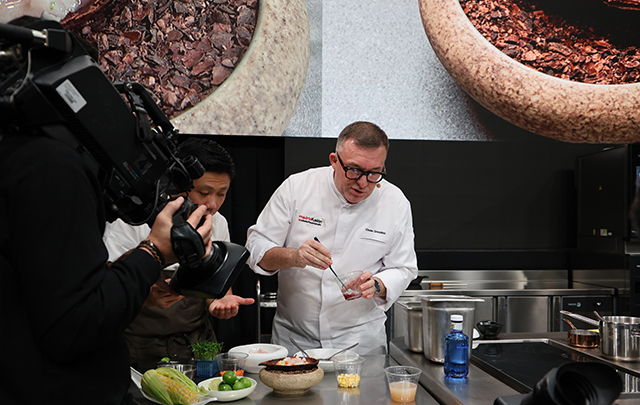News
The white secret of cocoa

As well as chocolate, the pulp that coats the seed is used to make syrup and molasses, which Chele González uses in his Filipino restaurant to create dishes that combine sourness and sweetness
When the cacao fruit is harvested, the usual process is to dry the seeds, which are covered with a white, unblemished pulp. This coating contains a viscous substance called mucilage, which drips down like a waste product. "It has acidic, sweet and citric notes", explains Chele González, chef and owner of the Gallery by Chele restaurant in Manila, the Philippines, for the past ten years. "We used the cocoa juice that is discarded in the chocolate process. The magic happens when you create a cuisine of territory. One of the keys is cocoa beyond chocolate. This can only happen if I understand cocoa in its original state, which is a fruit".
According to González and his team at Studio Lab, the cocoa mucilage makes up 25% of the fruit and they have developed two "by-products". Cocoa juice and cocoa syrup, "to make many things, they have infinite possibilities", says González at Madrid Fusión Alimentos de España, where he is preparing a complete menu with "cocoa ceviche" as a first course, "duck and mole" as a second course and "purity" for dessert. "If I don't offer chocolate, someone will kill me", he jokes.
Filipino ceviche differs from Peruvian ceviche in that coconut milk is used instead of tiger's milk (lime). "But we use cocoa milk, which gives it more nuances and flavours", González explains. "First we cook the fish in the lime, and then we add the cocoa juice, which has an impressive umami. It gives it a wonderful sensation. We finish with coriander, and we have our ceviche".
The challenge was not only to extract the flavours to create harmonious and rich dishes. He also had to work out how to make production profitable. "In the beginning, seven kilos of mucilage were extracted from a hundred kilos. Seven per cent was unsustainable, very expensive. It was a luxury. We couldn't have it", he says about the pulp, which must be extracted and pasteurised before use. "I became obsessed with how to extract those flavours and get them on the table. Because if I couldn't use them on the table in the Philippines, which is a cocoa producer, how could the rest of the world? We are missing that world beyond chocolate, those flavours.
With a focus on "sustainability", he started making vinegars, drying the shells and processing the mucilage. "From this project, we can use it regularly and we manage to make syrup or cocoa juice with the reduction", explains the chef. "Juice, molasses, and sugar (the latter is still in the "experimental" phase), are the basis of the applications we make in the kitchen.








